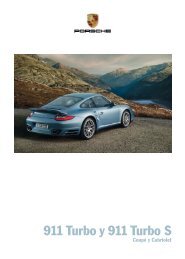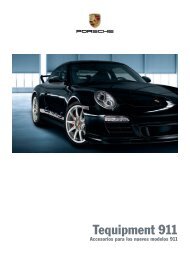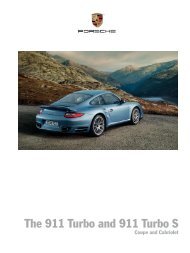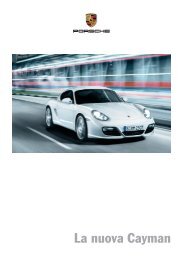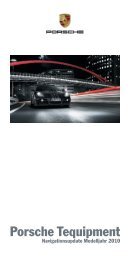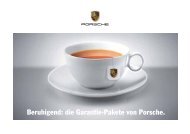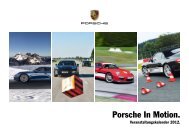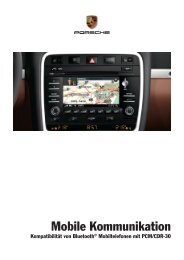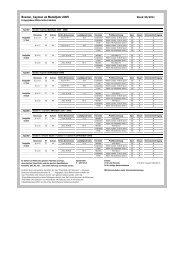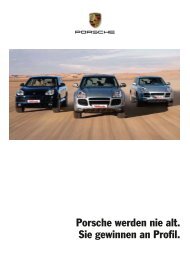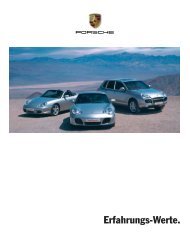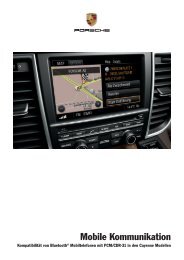You also want an ePaper? Increase the reach of your titles
YUMPU automatically turns print PDFs into web optimized ePapers that Google loves.
Brake booster<br />
The brake booster assists braking only when<br />
the engine is running.<br />
When the car is moving while the engine is not running,<br />
or if the brake booster is defective, more<br />
pressure on the brake pedal is required to bring<br />
the car to a stop.<br />
If this happens, ABS and PSM will also not operate.<br />
Moisture or road salt on brakes affects braking.<br />
Brakes will dry after a few cautious brake applications.<br />
Warning!<br />
Risk of an accident, resulting in serious personal<br />
injury or death.<br />
Driving through water may reduce the traction.<br />
Moisture on brakes from road water, car<br />
wash, or coating of road salt may affect<br />
braking efficiency.<br />
f Cautiously apply brakes to test brakes after exposure<br />
to road water, etc.<br />
58 Operation, Safety<br />
Brake wear<br />
Your car has excellent brakes, but they are still<br />
subject to wear. The rate at which they wear depends<br />
on how the brakes are used.<br />
f Have the brake system inspected at the<br />
intervals recommended in your Maintenance<br />
Booklet.<br />
Brake system warning light<br />
You can check the functionality of the brake<br />
system warning light by switching the ignition to<br />
the "On" position and verifying that the warning<br />
light illuminates.<br />
Warning light USA<br />
Warning light Canada<br />
If the warning lights in the instrument panel and onboard<br />
computer stay on when the engine is running<br />
or come on while driving, the brake pads are<br />
worn excessively.<br />
f Do not continue to operate the vehicle.<br />
Have your authorized Porsche dealer inspect<br />
or replace the brake pads.<br />
Brake pads and brake discs<br />
Wear on the brake pads and brake discs depends<br />
to a great extent on the driving style and the conditions<br />
of use and therefore cannot be expressed<br />
in actual miles on the road.<br />
The high-performance brake system is designed<br />
for optimal braking effect at all speeds and temperatures.<br />
Certain speeds, braking forces and ambient<br />
conditions (such as temperature and humidity)<br />
therefore might cause “brake noises”.<br />
New brake pads or linings<br />
New brake pads and brake discs have to be “broken<br />
in”, and therefore only attain optimal friction<br />
when the car has covered several hundred miles<br />
or km.<br />
The slightly reduced braking ability must be compensated<br />
for by pressing the brake pedal harder.<br />
This also applies whenever the brake pads and<br />
brake discs are replaced.



